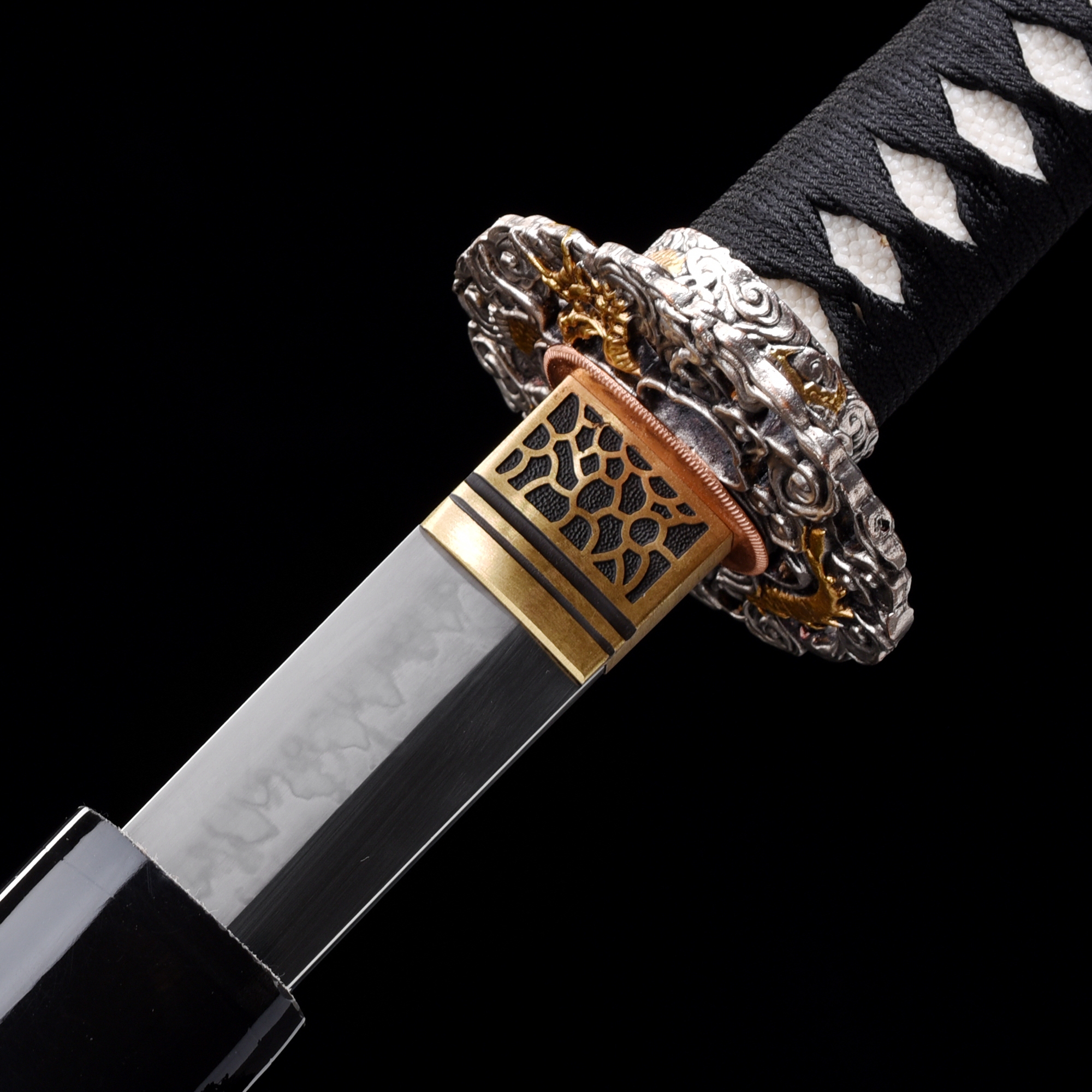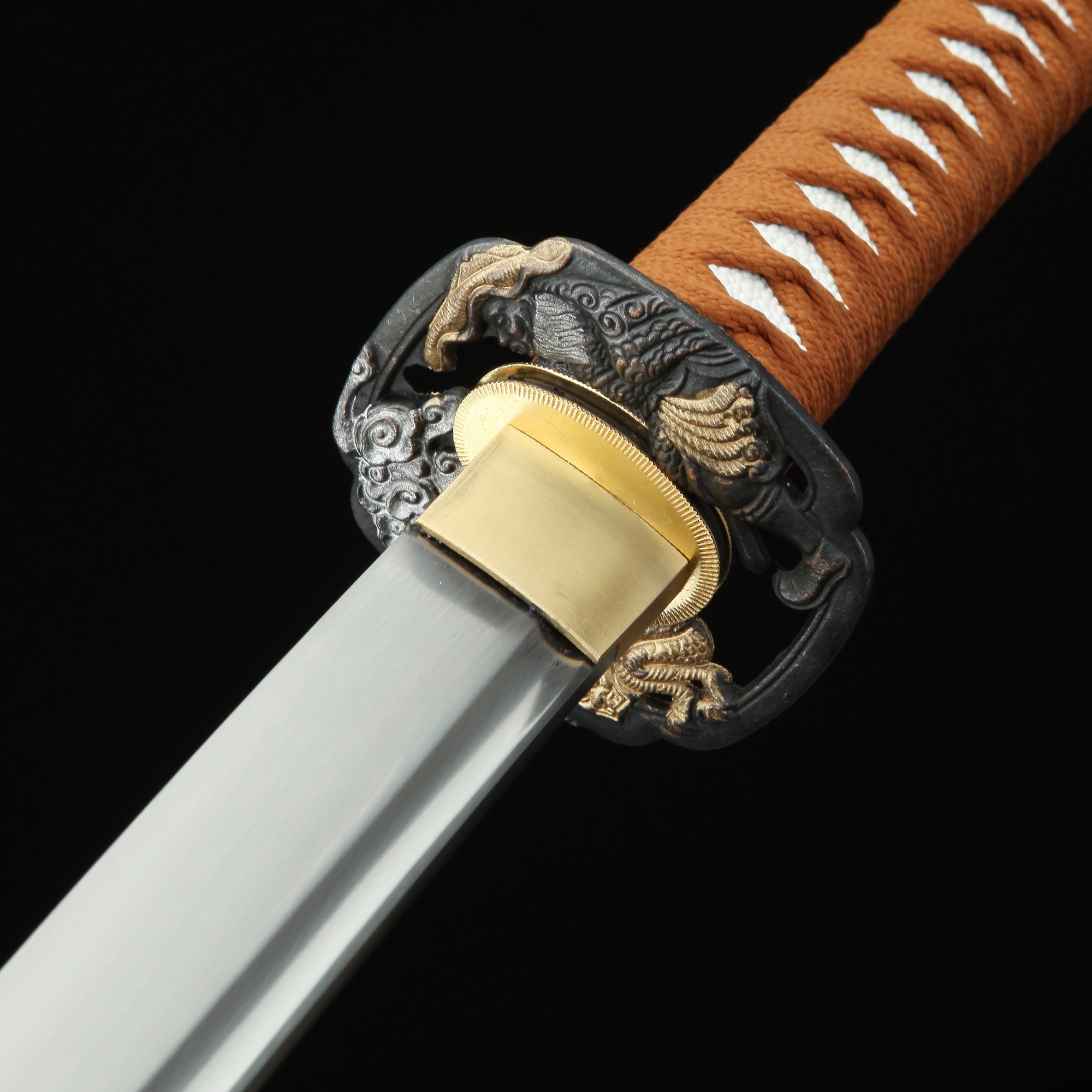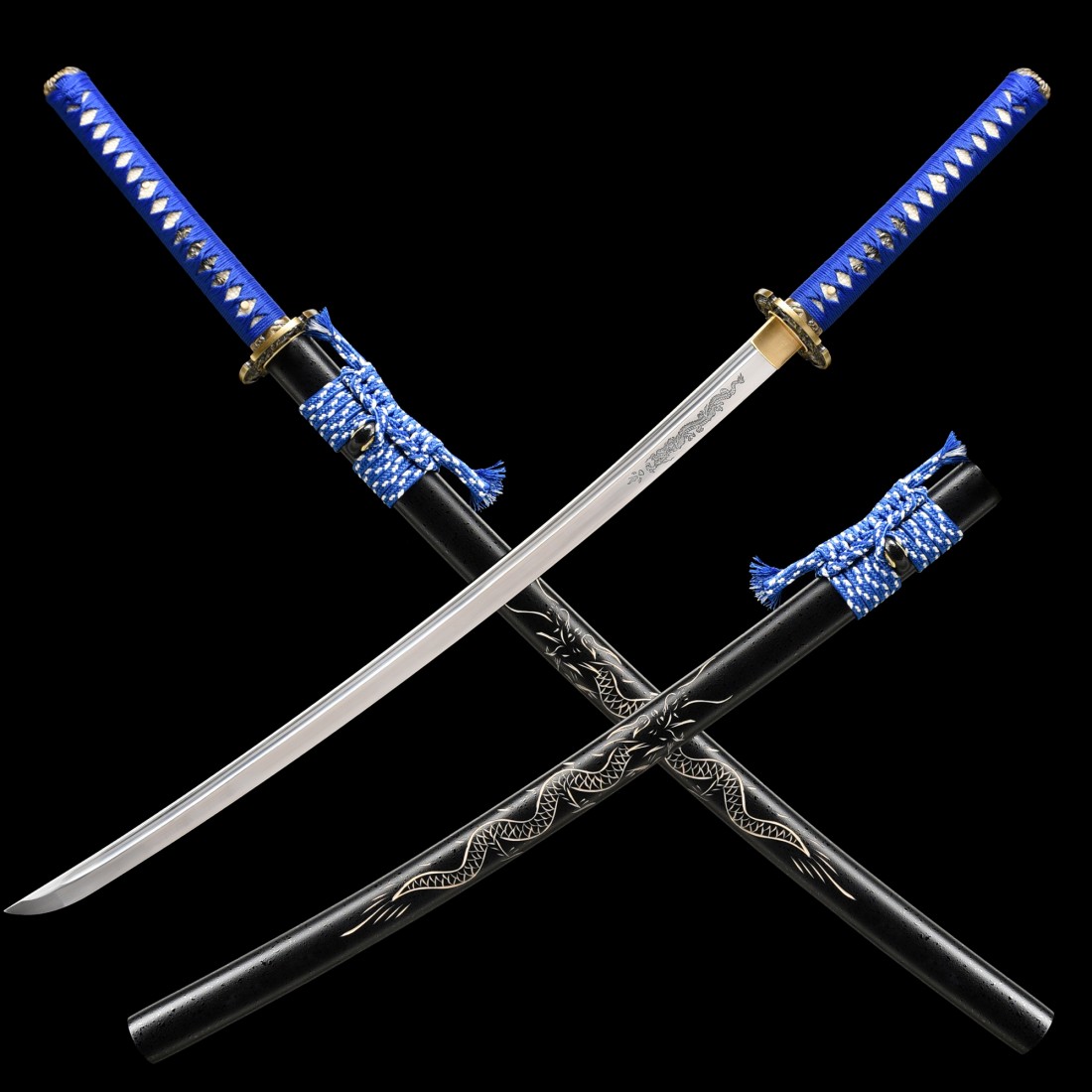Katana Kambot - Exploring Blade Performance
Thinking about a blade like the katana, it is a truly special kind of tool, a piece of history really, that has captured the imagination of people for a very long time. There's something quite compelling about its shape and what it represents, so many stories tied to it, you know? We often picture it in action, perhaps in a movie or a book, and it's almost as if you can feel the weight and balance of it just by looking. It carries a certain presence, a kind of quiet strength that makes you wonder about its make-up and how it was used, which is pretty cool when you think about it.
When we talk about the way these blades perform, especially something like a katana, there are a lot of interesting things to consider. It’s not just about how sharp it looks, but more about how it actually holds up to work, what happens when it meets something hard, or even how it was meant to be used in the first place. You might be surprised by some of the practical aspects, as a matter of fact, because the real world of swords is often quite different from what we might imagine from tales or pictures.
This article will take a gentle look at some common ideas and questions people have about katanas, touching on their construction, their strengths, and perhaps some of their limitations too. We will talk a little about different types of blades and how they are shaped for various tasks, so you get a better feel for what makes a katana, and how it might compare to other things. It's really about getting a clearer picture of these fascinating items, particularly when we think about the specific ideas around "katana kambot" and what that might mean for its practical use.
Table of Contents
- How Does a Katana's Edge Work?
- What Happens When a Katana Meets Something Hard?
- Is There an Ideal Way to Use a Katana Kambot?
- What About Different Swords and Katana Kambot Influences?
- Considering Katana Kambot and Specific Brands
- How Does Katana Kambot Handle Different Materials?
- Why is the Katana Kambot Curved?
- Was the Katana Kambot Always the Main Weapon?
How Does a Katana's Edge Work?
When you pick up a katana, or really most swords, one of the first things you notice, even if you just look, is the edge. The way it is made, the material used, gives it a certain firmness. This firmness is what helps it keep a good, keen cutting surface for a while. It means that when you use it for what it's meant for, it won't just crumple or lose its ability to cut right away, which is pretty important, you know? It's like having a good kitchen knife that stays sharp through a lot of chopping, rather than one that gets dull after just a few cuts. That firmness is a key part of its design, allowing it to perform its job effectively, in a way that makes sense for its purpose.
This quality, this ability to hold a keen edge, is something people have worked on for a very, very long time. Craftsmen throughout history have put a lot of effort into making sure that the cutting part of their blades would stand up to use. For a katana, this means a particular kind of heat treatment and shaping that gives the edge its distinctive characteristics. It's not just a random thing; it’s a deliberate choice in how the metal is worked, so it can do what it needs to do. This is a big part of why these swords have earned their reputation, as a matter of fact, because a blade that loses its edge quickly isn't much good to anyone.
So, you see, the firmness of the edge is not just a detail; it's central to the blade's function. It allows for the clean, precise actions that these swords are known for. Without that specific characteristic, the whole experience of using the sword would be quite different. It's a testament to the skill involved in making these tools, and it's what gives them their lasting appeal, too, because people appreciate something that works well and holds up over time.
What Happens When a Katana Meets Something Hard?
Even with an edge that is quite firm, a katana, like most swords, has its limits. If it hits another blade, or something similarly unyielding, it might get little nicks or even become less sharp. It’s a bit like hitting a hard rock with a good chisel; the chisel might chip a bit, or the edge could turn over. Swords, even those made with great care, are not indestructible. They are tools, and tools can show wear and tear, especially when put under strain, so it's almost expected to see some signs of use if they are truly put through their paces.
This reality often surprises people who only think of swords as these perfect, unbreakable things from stories. But in real life, a sword, even a katana designed for specific cutting actions, is still metal hitting metal or something else very firm. That kind of impact can cause small bits of the edge to break off, or it can push the very fine tip of the edge out of alignment, making it dull. It’s just the nature of materials, you know, and how they react when force is applied in certain ways. This is why people who actually used these weapons were very aware of their condition.
So, while the edge is made to be quite firm for cutting, it's not made to withstand direct, forceful blows against other hard, firm objects without some consequence. This is a very important point when you think about how these blades were actually used, and it sheds a bit of light on the practical side of things. It shows that even the most well-made items have points where they can be damaged, which is a good thing to remember about any tool, really, including a katana kambot.
Is There an Ideal Way to Use a Katana Kambot?
When it comes to using a sword like the katana, or perhaps a katana kambot, in a situation where you might face an opponent, the general idea that comes up is about being quick and decisive. The ideal way, as some might put it, is simply to get the job done before the other person has a chance to react or to make a move. This isn't just about strength; it's very much about speed, timing, and getting yourself into the best position to act. It's a way of thinking that emphasizes preventing a prolonged struggle, which makes a lot of sense in a tense situation.
This approach is rooted in the idea of efficiency and minimizing risk. If you can stop something before it truly begins, you reduce the chances of damage to yourself or your tool. It's a very practical mindset, honestly, one that values a quick resolution over a drawn-out engagement. This kind of thinking applies to many areas of life, not just sword use, where being prepared and acting swiftly can make all the difference. It's about being proactive rather than reactive, which is a pretty sound strategy.
So, the idea of "cutting them down before" really speaks to a philosophy of combat that prioritizes swift action and decisive outcomes. It suggests that the best defense is often a good, quick offense. This also hints at the training and discipline required to use such a weapon effectively, because being quick and precise doesn't just happen; it takes a lot of practice and a deep understanding of how to move and react. It’s a very important concept for anyone thinking about the practical application of a katana kambot, or any similar tool, for that matter.
What About Different Swords and Katana Kambot Influences?
For as long as people have been around, or at least for a very, very long time, the world has seen many different kinds of swords. These weapons, stretching across every corner of the globe, have taken on all sorts of forms. Their measurements, their outlines, and their overall lengths have been shaped by the ways people live, the things they believe in, and the customs they follow. It's quite fascinating, honestly, how a tool can tell you so much about a group of people and their history.
Think about it: a sword from one place might be short and broad, while one from another might be long and slender. These differences aren't random; they come from the fighting styles that were common, the materials that were available, and even the clothes people wore. So, a sword isn't just a piece of metal; it’s a reflection of its environment and the people who made and used it. This is why you see such a rich variety when you look at historical weapons, and it’s a big part of what makes studying them so interesting.
This idea of cultural influence is very clear when you consider the katana, which has a very distinct look and feel that is tied directly to Japanese traditions. Its curve, its length, its balance—all of these things were developed within a specific context. This means that when we talk about a "katana kambot," we are not just talking about a generic sword, but one that carries with it a long history of specific design choices and cultural meaning. It's a truly unique piece, in some respects, because of this deep connection to its origins.
Considering Katana Kambot and Specific Brands
I have heard some positive things about a particular brand, Ronin Katana, and people often want to know what others think about specific makers. It's a common question, you know, because when you are looking to get something like a sword, you want to make sure it is good quality and that it will do what you expect. People often share their experiences, and those stories can be very helpful when you are trying to decide. It’s like asking a friend for advice before you buy something important.
So, the question often comes up: what is the actual point of a particular brand or a particular type of sword, like a katana kambot? What makes one better or different from another? This is where personal experience and reputation come into play. People who have used these items can give you a real sense of their performance and durability. It’s not just about what it looks like, but how it feels in your hand and how it performs when you actually put it to use. That practical feedback is very, very valuable.
It is interesting to hear about different brands and their reputations. For instance, I won’t say anything bad about another type of item, like the Mustang, but I did try one about ten years ago, and my experience was a certain way. This kind of personal trial, even if it’s for something different, shapes your view. So, when people ask about Ronin Katana, they are looking for those kinds of direct impressions and comparisons, which is perfectly natural when you are trying to make an informed choice about something like a katana kambot.
How Does Katana Kambot Handle Different Materials?
When I think about my own katana, I plan for it to have a specific kind of geometry for cutting, one that is good for slicing through somewhat firm targets. This means it should be able to cut through things like green bamboo, and even the drier, yellow kind of bamboo. This kind of cutting ability is very important for understanding what a blade is truly capable of doing. It is about how the shape of the edge and the overall blade work together to get through different kinds of materials, which is a practical test of its quality, in a way.
People often talk about different types of steel and their properties. For example, I know that one kind of steel, 3V, is generally thought to be tougher, meaning it resists breaking more easily. Another kind, M4, is known for keeping its edge better, staying sharp for a longer time. So, a question that comes up is, can a katana made of a certain material truly perform as expected? Can it be that a katana made with these advanced steels, or perhaps a katana kambot, would show a different level of performance?
This line of thinking gets into the heart of how materials influence performance. It’s not just about the skill of the person making the sword, but also about the raw stuff they start with. The combination of good design and good materials is what makes a blade truly effective for its intended purpose. It’s something that people who are serious about swords, or any kind of cutting tool, spend a lot of time thinking about, because the right material can make a real difference in how a katana kambot performs.
Why is the Katana Kambot Curved?
The katana is shaped in a particular way, with a noticeable bend, and this bend makes it very well suited for a slicing motion. It's like how a bread knife has those little teeth to help it saw through the crust; the katana's deep curve helps it glide through what it is cutting. On the other hand, something like a kukri, which has a different kind of edge, is more for a shearing action. This is because of how its edge is more noticeable or pronounced when it is pulled through something, which makes sense given its shape, you know?
This difference in shape and intended action is a very good example of how form follows function in tool design. The curve of the katana isn't just for looks; it's a very practical feature that helps it do its job effectively. When you pull the curved blade across a target, the edge makes contact progressively, allowing for a long, smooth cut rather than a blunt chop. This is a subtle but very important distinction in how different blades are meant to be used, and it really defines the katana's unique character.
So, when you see that deep curve on a katana, or a katana kambot, you are seeing a design choice that is all about how it interacts with what it cuts. It is built for that specific kind of slicing motion, which is why it has become so famous for its cutting ability. This contrasts quite a bit with other blades that might be straighter or have a different kind of edge profile, because they are made for different kinds of work, which is pretty interesting when you think about it.
Was the Katana Kambot Always the Main Weapon?
It is sometimes thought that the katana was the primary weapon, but often it was actually a secondary tool, or even a third choice, especially if the person fighting preferred to use something like an axe or a club. This might surprise some people who picture warriors always with a katana as their main piece of equipment. But history shows that people used what made sense for their particular situation or their fighting style, which is a very practical approach, as a matter of fact.
Unless someone was specifically trained in a fighting school that focused on using two swords at once, things might have gone quite differently. This means that the idea of a warrior always relying solely on their katana isn't always the full picture. Other weapons had their place, and sometimes they were even preferred for certain kinds of engagements. It really just depended on the person, their training, and the circumstances they found themselves in, so it’s not a simple one-size-fits-all answer.
This understanding helps us get a more complete view of the katana's role. It was a very important weapon, to be sure, but it wasn't always the only one, or even the first one, a fighter would reach for. It shows that the history of weapons is rich and varied, with many different tools serving different purposes. So, when we talk about a katana kambot, it's good to remember that its place in a warrior's set of tools could vary, which is something to keep in mind about its historical use.
To get a better sense of how these blades are made, you might look at how a Hanbon Forge (made in China) 1060 Damascus katana, which is clay tempered (meaning it's hardened in a special way), comes together. Someone named Marky Steele shared some details about this on August 12, 2021. For firmness and cutting ability, planning goes into these things. The ideal way is simply to cut them down before they can cause trouble, which is a simple, direct approach. These blades, stretching across the globe, have their measurements, shapes, and lengths shaped by culture and traditions. A question or request for ideas about the cross section (the basic grind) of a katana often comes up. Someone named Stacy started shaping the bevels on their katana recently, which was 36 overall, with a 27 blade and 3/16 thickness. As far as I know, there isn't a clear dividing line between a katana and a wakizashi. A 25-inch blade isn't too unusual for a katana, though it would be very long for a wakizashi. The traditional Japanese katana blade has wave patterns that go across the blade body in half. People often wonder if the pattern was a type of visual effect or something more.

Black Katana | High-performance Japanese Katana Sword T10 Folded Clay

1065 Carbon Steel Katana | Handmade Japanese Katana Sword With Natural

HanBon Forged Japanese Samurai Sword Real Dragon Katana T10 Steel Full